By Jennifer Heebner, Editor in Chief
Bernd Munsteiner, world-renowned and award-winning gemstone cutter and creator of the fantasy-cut gemstone style, died on June 6, 2024. He was 81 and died in Stipshausen, Germany, surrounded by his family.
His famously talented gem-cutter son, Tom, preceded him in death on Dec. 28, 2023, as did his son Jörg. Bernd is survived by his wife of nearly 60 years, Hanne; daughter-in-law Jutta (married to Tom); and beloved grandson Philipp (son of Tom and Jutta), who serves as the fifth generation of Munsteiner cutters and carries on the family business.
Bernd was born on March 2, 1943, to a lapidary and jewelry family, starting his apprenticeship with his father in the 1950s. In 1962, he enrolled in the Hochschule Pforzheim School of Design in Germany while also studying painting, metal sculpting, and jewelry design. Munsteiner graduated in 1966, leaving the school with a degree as well as a penchant for challenging conventional gem-cutting methods. He was not interested in cutting perfect pavilions; he wanted to carve asymmetrical negative spaces on precious stones—looks that became his signature fantasy style of gem carving.
Traditional cutters frowned on his methods, but they still took off in popularity. In 1973, he established his own Munsteiner Atelier in Stipshausen, turning out masterpiece upon masterpiece for fans and collectors.
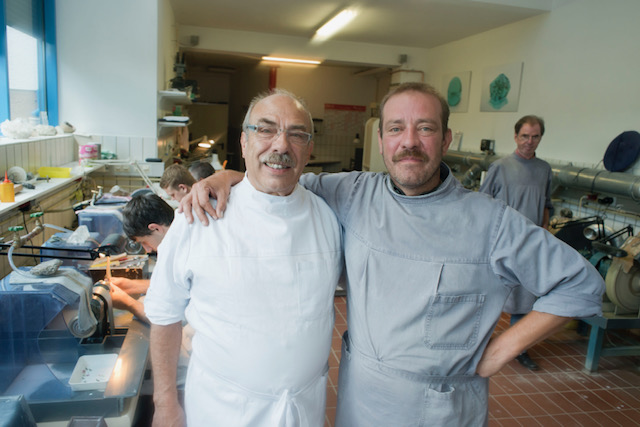
Signature Style
As he honed his skills, domestic and international awards (including some AGTA Spectrum & Cutting Edge Awards) followed, cementing the success of his new cutting techniques, which were far from routine. In fact, they were groundbreaking.
He pioneered a contemporary cutting movement that inspired many. The look? Concave or negative geometric cuts and abstract shapes with irregular polished facets on the backsides of gems. Cut this way, light would bounce off facets differently and with more majesty. Gem sculptures eventually joined his jewelry offerings, and devotees sought him out for museum-worthy objects as well as additions to personal collections.
“His girdles are always angular and purposely uneven,” says onetime stone importer and longtime jewelry designer Susan Helmich, who was among the first Americans in the industry to meet him. “His top and pavilion sides of his cuts intersected in shard shapes, later followed by zigzag cuts.”
Private collector, gemstone enthusiast, and Apple cofounder Michael Scott stated in his book “Light & Stone: Highlights From The Scott Gem Collection” that the Munsteiner signature “involved inward cuts” that created “grooves on the back and front of stones … with each side reflecting against the other, giving the piece even greater depth and vibrancy.”
Those who set his styles, meanwhile, needed to have experience working in heavier metal forms, given the depth of his gemstones, maintains Shelly Sergent, Curator, Somewhere in the Rainbow (SITR). Sergent met Munsteiner through Helmich ten years ago, and now has upwards of 18 pieces of his handiwork in the privately owned SITR collection (with about 12 more from the rest of the Munsteiner family, including Philipp).
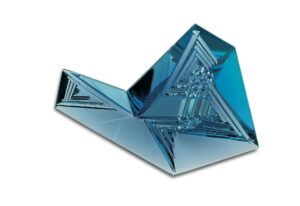
“Designers who set his stones needed to be confident creators in super clean and bold styles to encapsulate his gems,” she explains.
Sergent sees Munsteiner’s DNA as modern 3D paintings in gems, with strong angles and hidden surprises, like ocean waves within the “Dom Pedro Obelisk Aquamarine,” housed in the Smithsonian Natural History Museum’s National Gem Collection Gallery in Washington, D.C.
“His works are always dimensional and require viewers to study the pieces,” she notes.
Dalan Hargrave, a master gemstone cutter in his own right, took inspiration from the inverse cutting techniques to make his own more intricate style of them.
Says Hargrave, “His pavilions have randomly placed grooves that reflect the opposite facets to create the art. I don’t know words strong enough to describe his impact on the fantasy-cut gem movement. It’s gone in many different directions, but the genesis of it is with what Bernd started.”
Dr. Jeffrey Post, longtime Smithsonian Curator and Research Mineralogist who recently retired from his full-time position of 32 years (he remains a research associate and Curator Emeritus), agrees with Hargrave.
“Munsteiner’s pieces were cut so artistically, with notches in the back, that they used light in a different way and made us look at the gems differently,” he says. “The style opened up the way we appreciated and loved gemstones.”
Famous Works
While Munsteiner’s masterpieces are too many to count and contain in one article, three of his most storied works of art are housed prominently in some of the world’s finest collections of art.
First among them is the “Dom Pedro,” cut from Brazilian-origin material from the largest Aquamarine crystal ever discovered. The piece, weighing 10,363 carats and standing two feet tall, took Munsteiner more than 10 months to complete (in 1993). It’s housed in the Smithsonian’s National Gem Collection Gallery, opposite the Hope Diamond.
Post recalls meeting Munsteiner in 2010, right before the Dom Pedro took up permanent residence in the museum. Post flew to Germany to see Munsteiner’s preferred way of displaying the gem sculpture.
“He showed us how he worked and how the gem should look in the museum,” he recalls. “He taught us that a gem didn’t need to be mounted and worn to be appreciated; if a gem was cut the right way, it became a piece of art.”
Next is the “Metamorphosis,” a Brazilian rutilated Quartz weighing 2,900,000 carats. The object was part of the iconic Scott collection and once resided in Apple’s headquarters in Northern California. Scott had a special relationship with Munsteiner for years, and his support helped raise the profile of his distinct manner of gem carving.
Finally, his most beloved project may be the Agate windows that he created with son Tom for their church in Germany. Two windows feature 1-inch by 1-inch squares and ½-inch by ½-inch triangles of cut Agate that took more than three years to complete. The windows are about eight feet tall and three feet wide, with some curving at their tops.
More Munsteiner treasures can be found worldwide in other museums—including the Alfie Norville Gem & Mineral Museum at the University of Arizona in Tucson, Ariz., and the Hermitage Museum in St. Petersburg, Russia, among others, as well as private collections.
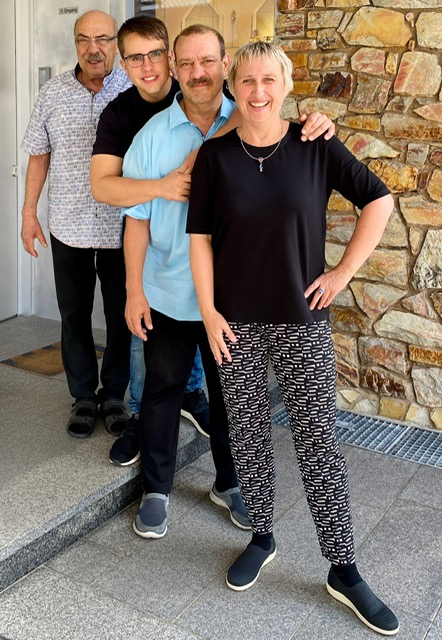
Inspiration to Others
For sure, Munsteiner’s styling has launched the careers of thousands of gem cutters and jewelers who took inspiration from his artistry.
“Bernd’s innovative style of cutting gemstones was the beginning of what has become a vast fantasy-cut gemstone community with a lot of diversity,” notes Hargrave. “Not only did he transform gemstones, he changed how we view them, as objects of art.”
Sergent calls her introduction to him and his family and the ensuing professional admiration and bond a privilege.
“There was an immediate connection to the stunning works of gem art they produced, both masterful and exemplary in every detail, which SITR stands for,” she says. “The gemstone and jewelry relationship was a natural fit for SITR. But more importantly, being invited by Bernd and Hanne into their home, gardens, and sanctuary in Germany was like sharing time with gemstone royalty—an intimate experience that will never be forgotten and led to a deeper understanding of the richness and the passion of the Munsteiner legacy. Our hearts are broken at the loss of Bernd and Tom, and yet the world is brighter, and SITR is proud to showcase these remarkable art pieces for generations to come.”
Patricia and Edward Faber, owners of the Aaron Faber Gallery in New York City, carried Munsteiner’s works. They first met him in the 1980s through H.Stern, which opened an exhibition of his work to introduce it to New York.
“We proceeded to represent Bernd’s work through our gallery, mounting a series of shows over the decades, showcasing his unique vision of cutting natural-color gemstones,” says Patricia. “His embracing personality and generous sharing of good will sealed our friendship. Visiting his home studio over the years in Stipshausen has always been a revelation and celebration: new artists’ work on exhibition, the warm welcome from Hanne and family enriching everyone in their circle. He created a world around him that was supportive and productive in advancing modern jewelry. He will be forever remembered, and his influence globally will long endure. We will miss him deeply.”

The Future of Munsteiner
The Munsteiner tradition now rests on master goldsmith Jutta and her 21-year-old son Philipp, who has already started adding his own point of view to the talents inherited and traditions established by his grandfather and father.
“Bernd opened the door to the magical world of gemstones for me and Tom,” he says. “He was the first to change the way gemstones were cut, and I am very proud of him and am his biggest fan. With a lot of patience and love, he taught me how to cut at an early age. Bernd looked after me during every phase of my childhood and is therefore my childhood hero. He left a mark in my heart and will remain in my memory forever. I am very grateful that I was able to spend so much time with him.”
Jutta, meanwhile, treasures the time spent with her father-in-law and recalls his zest for something even more important than gemstones, his family.
“Bernd loved and enjoyed his family the most,” she says. “Getting up in the morning to start the day with his family and then going straight to his passion for gemstones. He was a very cheerful person and brought back something he found from every walk to inspire new gemstone designs. Going through life with open eyes was his motto.”

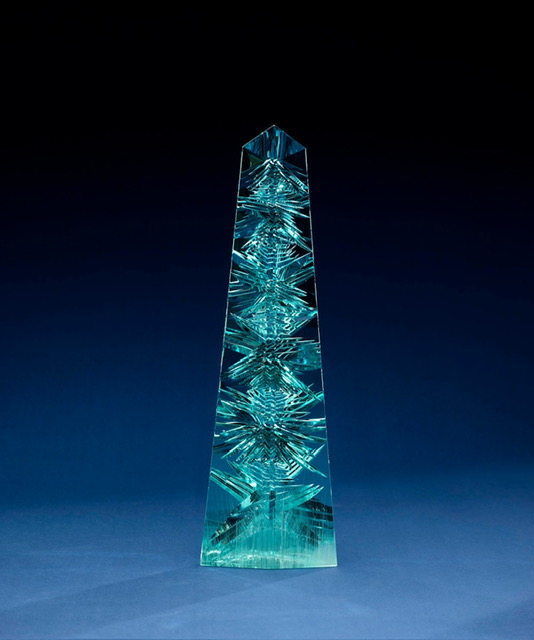
Helmich Meets a Master
Jewelry designer and gemstone importer Susan Helmich recalls her first encounter with Munsteiner’s work. It was during the Tucson gem shows in 1984, where she bought an unusually carved Amethyst from fellow dealer (now deceased) Bill Heher, founder of Rare Earth Mining Co. Helmich became infatuated with the styling and determined to meet the cutter, whom Heher said lived in Germany.
Later that year, she bought a ticket to Deutschland to find him and buy more gems. She tracked him down to a little town near the country’s gem-cutting center of Idar Oberstein, knocking on his atelier door—unannounced and unexpected.
“My heart began to race as he opened the door,” recollects Helmich. “He looked down at me, with a hand on his pipe and glasses on the tip of his nose saying, ‘I don’t understand—how do you know of me?’ I reached into my pocket and pulled out the fantasy-cut Amethyst I’d purchased and replied, ‘This is how I know of you!’ Bernd smiled and said ‘Welcome!’”
While a friendship was born that day through limited exchanges in English (Helmich didn’t speak German), the language of gems was ever present and a directional force. Helmich bought five more pieces from him and gave him instructions to send more when available.
“That one day paved the way for decades of inspired designs and a life-changing friendship unlike any other I’ve known in my career,” says Helmich. “Bernd was my North Star. He was my confidante, colleague, and inspiring artist. He reminded me to look beyond what we see to believe in the seriousness of art and to create without boundaries. He was a man of integrity who set his compass to follow his heart.”
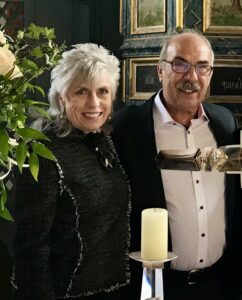
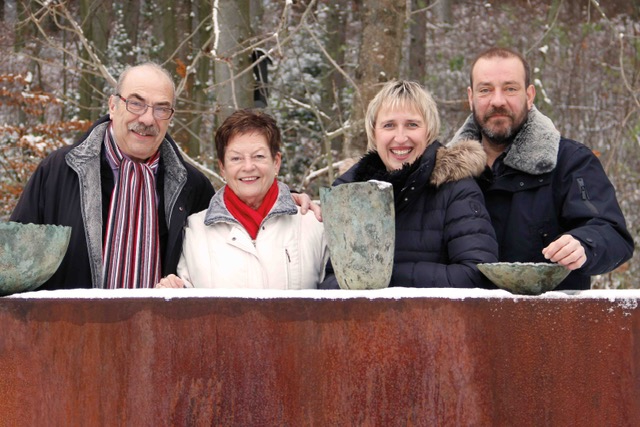
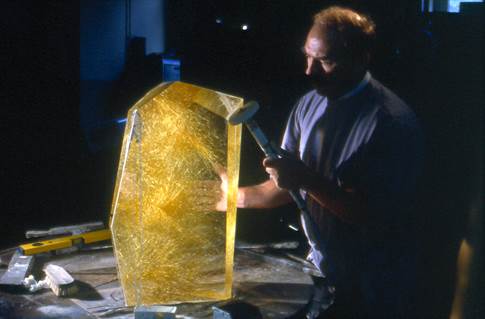
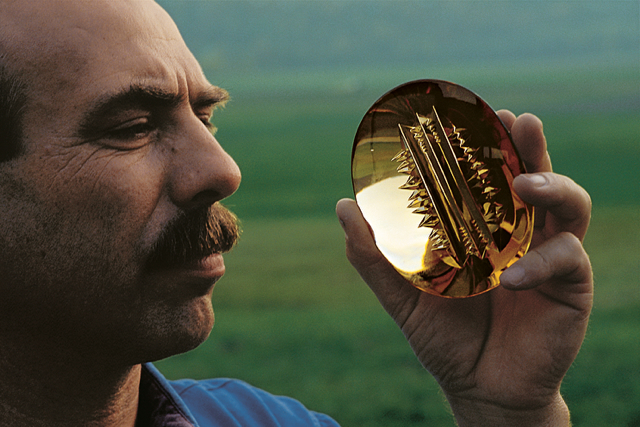
This is proprietary content for AGTA and may not be reproduced.
